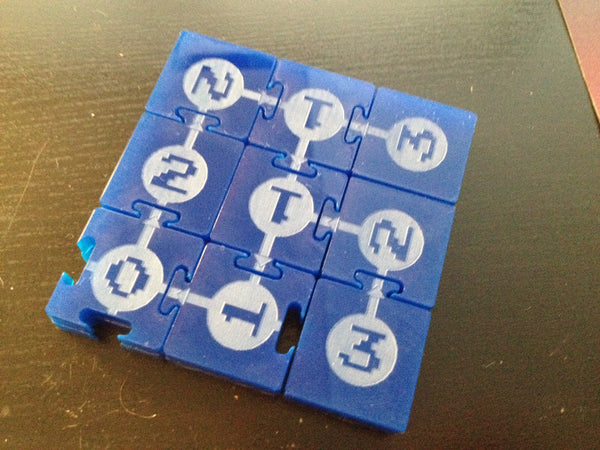11 days ago, I released my first commercial game into the world. It's a game I spent about a year working on, agonizing over details and design and balance. I packed a lifetime of strategy game criticisms into a single game that I hope addressed them all. I learned a lot along the way. There's still a long way to go from here to sustainability, but I'm getting there.
6 days ago, 2 days after my first exhibiting convention ended, I started conceptualizing a brand new game.
At the Philly Game Forge, we do monthly game jams. Every month, there's a new topic and we're supposed to spend about 12 hours over the course of a single week turning that topic into a game. The focus is usually on meeting some interesting challenge, such as using a single control axis to make a game for stroke survivors, or fitting a unique theme like modeling a game after a tweet from @_FloridaMan.
This month, it's the Profit Jam. The challenge is to spend up to two weeks making a game, then four weeks attempting to turn a profit with that game. The winner is the person or team whose game makes the most money.
At first, it seemed like a crass theme. Game jams are about fostering new skills or meeting some artistic challenge, aren't they? What place does money have in that? That doesn't seem like a jam theme.
"Finishing a product is a skill."
Except it is. Finishing a product is a skill. Releasing a finished product to the world is a skill. Making money with your craft is a skill. Turns out, they're all skills that most of us could stand to improve upon in the same way we could step up our game with art or code or design.
The jam started while I was in Austin, 1,600 miles away from the vast majority of my tools. I initially laughed and completely wrote it off, assuming I wouldn't be able to participate. The convention concluded, however, and instead of making me want to hibernate, it gave me an even greater thirst for creation.
I started driving back from Austin to Philadelphia 6 days ago and that's when my brain started dreaming up ideas.
- I just got a ton of practice with my laser making copies of my game for SXSW, so maybe I could make a physical game with that. How many people have lasers at their disposal to prototype and make on-demand copies of high-quality tabletop games? People also like the look and feel of acrylic, so maybe the quality will make up for any design shortcomings from being made in a few days.
- If I'm trying to make money efficiently, maybe I could do something that uses tiles so I could cut them without wasting acrylic.
- Shipping is expensive with Yomi's Gate, so if I'm doing acrylic maybe I could make something that's under 13 ounces so I can do first class instead of priority. Maybe I could also make sure it fits inside of a box I already stock, like the small coaster boxes.
- People like the interlocking dovetail tabs in the Yomi's Gate boards but they're only used at setup, so maybe I could make tiles that use tabs during actual play.
- If tabs are interlocking, why are they interlocking? Maybe they could go together in some sort of Voltron-esque fashion for some reason.
So on and so on.
It's 26 hours of raw driving from Austin to the suburbs of Philadelphia, you know. That's a lot of time for an idea to take root and churn over and over until it starts to become coherent. It's like when you get good ideas while you're taking a shower because you can't be distracted by anything else, only this was like a 26 hour shower over the course of three days.
"It doesn't need to be super pretty, it just needs to work."
So when I got back, I wrote everything down. I opened up Illustrator and I sketched the basics. I tested the physicality of the tabs and tiles to see if what I had in mind would work. I wrote down a loose rulebook and today I created the entire symbology for those rules with the absolute most basic symbols that would get the job done. It doesn't need to be super pretty, it just needs to work.
And it does. It works. I played two games tonight and it's almost exactly what I thought it would be like.
Are there rough edges with the design? Sure, it's barely been playtested. Everything I envisioned plays out the way I thought it would, but I'm only one person and I'm sure I missed stuff.
Is it a fully functional, entertaining game that looks professionally made and ready to ship? You bet.

What I can tell you for sure:
- I had fun playing it. I think others will too.
- I had fun making it and exploring what constitutes the bare bones of a tabletop game.
- The tiles look and feel super nice and are fun to play with in their own right.
- The game itself weighs only 8 ounces, 5 ounces lighter than my goal.
- It plays quickly and sets up in seconds. It's literally ready to play when you dump the tiles onto the table and find the starting piece.
- I didn't have to wait for a publisher to tell me that my game was good enough to sell to the world.
